Search
Nestled in the Chayuan Area of Chongqing’s Nanan District, with the verdant slopes of Qiaoping Mountain rising as a natural backdrop, Chongqing East Railway Station stands as a pivotal hub within China’s national "Eight Vertical and Eight Horizontal" high-speed rail network, and the largest integrated high-speed rail transportation hub in western China. Spanning a total floor area of 1.22 million square meters-equivalent to 170 standard football fields-it boasts a sprawling station complex with 15 platforms and 29 tracks. In the future, it will accommodate seven high-speed rail lines, four urban rail transit routes, and multiple conventional railway lines, poised to achieve a transformative "time-space compression effect":1-hour connectivity to Chengdu-Chongqing city cluster, 3-hour coverage of central and western regions, and 6-hour links to megacities like Beijing, Shanghai, and Guangzhou.
Soaring above Chongqing East Station, the pulsating heart of Southwest China’s transit network, Wanhao Group has orchestrated an avant-garde symphony of engineering and artistry through its pioneering.PTFE membrane architecture. Drawing inspiration from the ethereal interplay of mountain mist and urban dynamism, the 68,000-square-meter canopy-crafted from geometrically intricate dual-curvature modules-achieves a structural paradox: a gossamer-thin 0.3mm membrane triumphantly spanning 100 meters, its tensile elegance defying conventional architectural dogma. By day, the semi-opalescent surface transmutes sunlight into a kaleidoscopic ballet of luminescence; by night, it morphs into an immersive canvas, projecting holographic narratives of Chongqing’s storied past and cybernetic future.
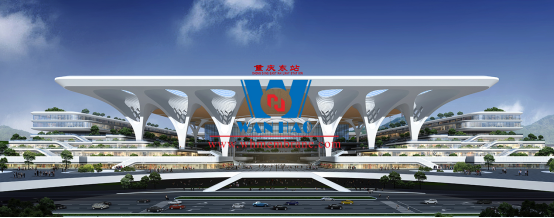
Beyond its technical prowess, the structure embodies sustainable virtuosity. An adaptive bilayer pneumatic system, governed by AI-driven environmental analytics, dynamically modulates thermal transmittance and solar gain, slashing HVAC loads by 35%. Nano-engineered photocatalytic surfaces repel pollutants with molecular precision, while fractal-inspired drainage channels intertwine with bifacial photovoltaic edging—harnessing Chongqing’s mercurial climate into a renewable energy tapestry. With 92% photopic transmittance orchestrating circadian harmony, the canopy becomes a beacon of carbon-neutral ambition, where light and logic converge.
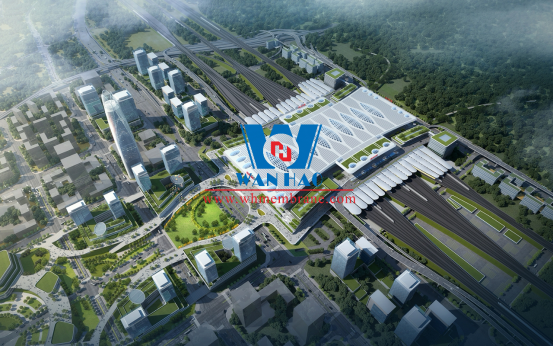
The design’s sinuous topology-a parametric homage to the Yangtze’s hydraulic cadence-transcends mere infrastructure. Algorithmically sculpted curves mirror ancient trade routes reimagined through digital futurism, blending the city’s rugged terrain with liquid architecture. Light transforms into a cultural cipher: dawn bathes the membrane in iridescent gradients, while dusk ignites AI-generated auroras, framing transit as a multisensory odyssey.

Here, Wanhao Group curates hyper-functional spatial poetry. Passengers glide through a liminal realm where technology, ecology, and mythology intertwine-a space where rainwater murmurs sustainability metrics and sunlight choreographs ephemeral shadow plays. Each departure becomes an existential voyage, suspended between terra firma and celestial expanse. Architecture ceases to be static; it evolves as a dialectic of heritage and horizon, transmuting transit hubs into cathedrals of human aspiration-where every journey whispers the promise of alchemy.
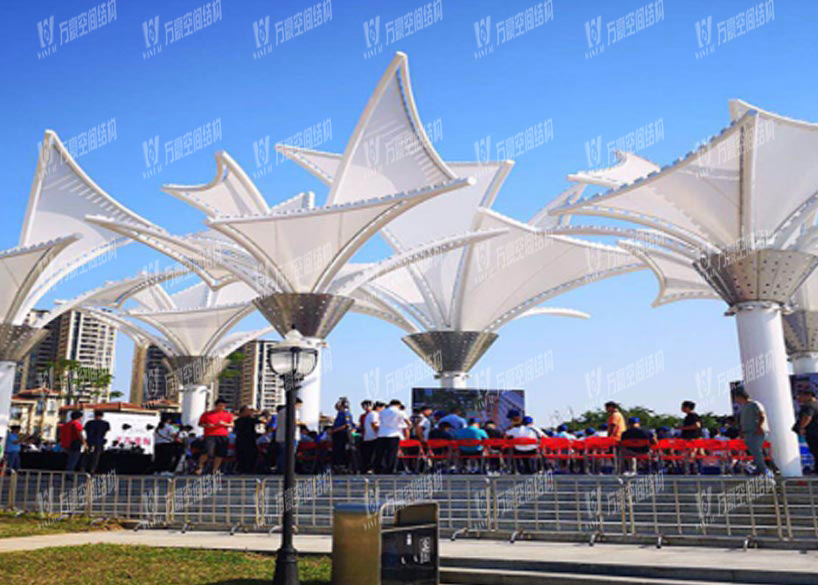 Dongguang Dongjiangxian PTFE Mesh Coating Tensile Membrane Structure Project
Dongguang Dongjiangxian PTFE Mesh Coating Tensile Membrane Structure Project
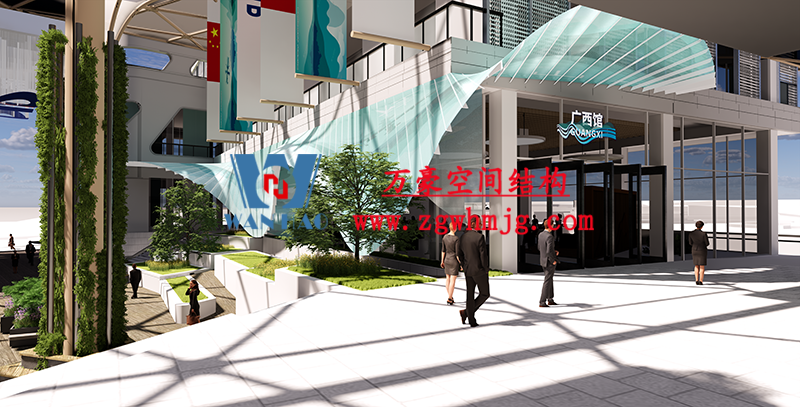 PTFE membrane structure project of China ASEAN featured brand convergence center
PTFE membrane structure project of China ASEAN featured brand convergence center
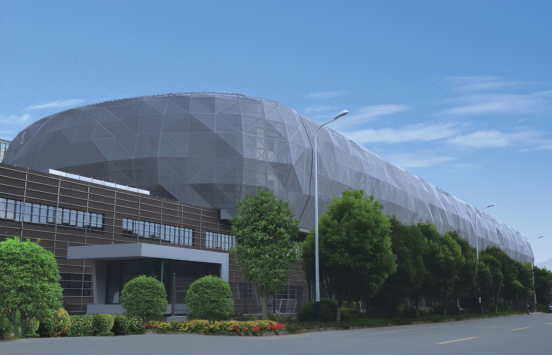 Ningbo Physis Technology Co., Ltd exterior PTFE mesh membrane structure
Ningbo Physis Technology Co., Ltd exterior PTFE mesh membrane structure
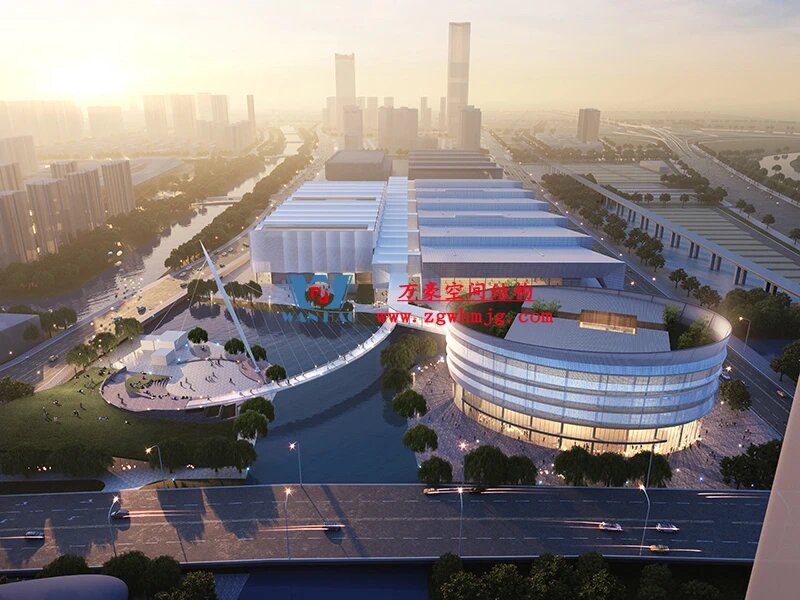 Shaoxing International Convention and Exhibition Center PTFE mesh fabric curtain wall
Shaoxing International Convention and Exhibition Center PTFE mesh fabric curtain wall
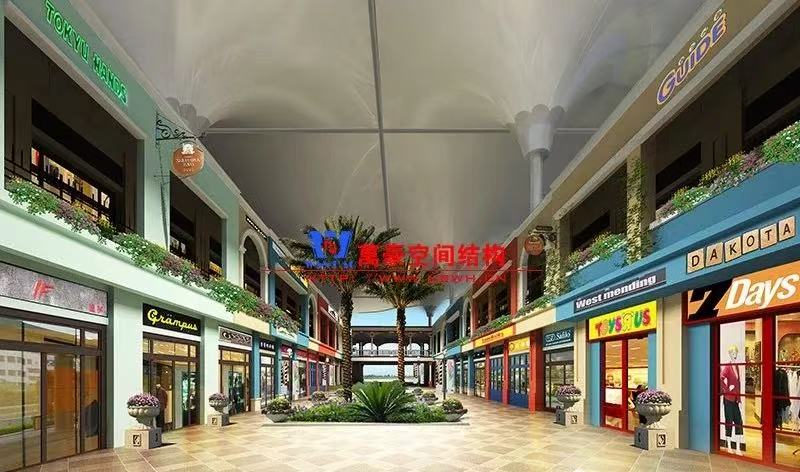 PTFE Tension Structure Membrane Roofing for Liaocheng Joy Town Colorful Xiangyun
PTFE Tension Structure Membrane Roofing for Liaocheng Joy Town Colorful Xiangyun
 PTFE Roofing Membrane Structure Illuminates Moi International Sport Centre, Kenya
PTFE Roofing Membrane Structure Illuminates Moi International Sport Centre, Kenya
Copyright © Zhejiang Wanhao Group Co., Ltd. All Rights Reserved.
Sitemap | Technical Support 